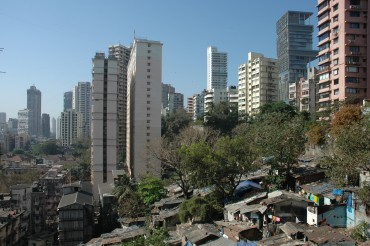
Coexistence of ‘slums’ and high-rise buildings, Mumbai Photo: Rahul Mehrotra
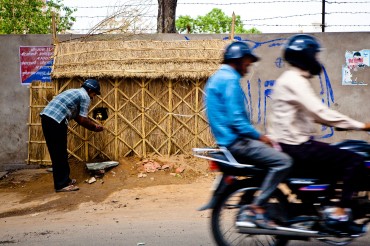
Thatched Hut using passive cooling techniques to keep drinking water cool for public supply Photo: Carlos Chen
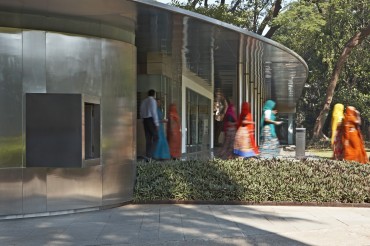
Visitor Centre at CSMVS; Mumbai, India, 2011 Photo: Rajesh Vora
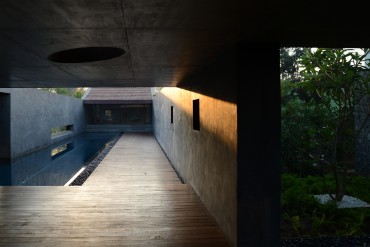
Three Court House; Alibag, India, 2014 Photo: Rahul Mehrotra
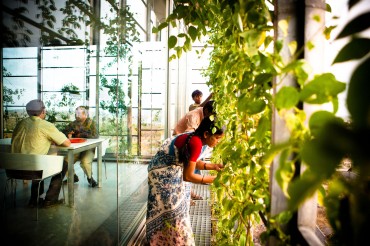
KMC Corporate Office; Hyderabad, India, 2012 Photo: Carlos Chen
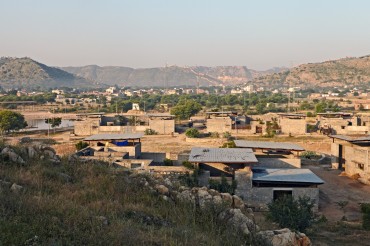
Hathigaon: Housing for Elephants and their Keepers; Jaipur, India, 2010 Photo: Rajesh Vora
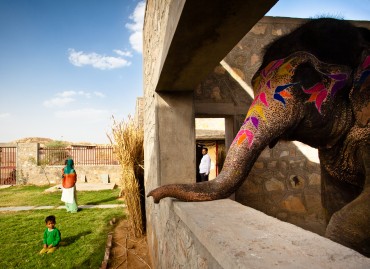
Hathigaon: Housing for Elephants and their Keepers; Jaipur, Rajasthan, India, 2010 Photo: Carlos Chen
16.7.2014 – Issue 16 - Identity & Modernity – Mehrotra Rahul, Mateo Josep Lluís – Interviews
The Context of the Context
Interview with Rahul Mehrotra
JLLM The first question is about the dialectic between the terms identity
and modernity. The typical understanding of modernity is the creation
of a kind of layer that is added to a place. For instance, Rem
Koolhaas’s ideas about China twenty years ago again introduced
this excitement about big new things that appear from the outside,
like Le Corbusier in India and Brazil. There is a duality that has been
present for a long time, but it is now taking a new form in contexts
like China, highlighting the question of identity more crucially than
years ago. Would you agree?
RM I think modernity is about new social formations. It has implications
for production methods and standardisation, leading to homogenisation.
The most effective modernity has been homogeneity, and
now globalisation is forming the last layer. The construction of identity
is beginning to challenge that. I think it is important to introduce
the term culture into the discussion. For me, culture is a society’s
implicit rules. Very rarely is it a written rule: you might say it is qualified
in music, but that then becomes a tradition; it becomes an art
form. In some cultures, people move closer to each other when they
are talking, whereas in America they step back, because they think
you are attacking them. Body space is an implicit form of politeness,
like respect for elders. Culture is always evolving. The formation of
identity is the moment when societies want to express their culture.
When the effects of homogeneity due to globalisation and modernity
become very extreme, society reacts because it feels that its culture
is being threatened. In the architectural discourse, identity is not
about excavation or archaeology; identity is about construction.
When we collectively identify with a set of values, identity is constructed.
JLLM I would like to examine these terms at a more professional, architectural
level. In many places, artisanship is seen as a positive energy,
whereas modernisation fought against it. I think it is interesting
to see artisanship as a tool for building identity in physical terms.
Can you relate to that?
RM Absolutely. There are specific ways of redefining context with
very tangible things like the climate, material, artisanship, and so
on. It is not easy, but it is the most direct way to localise something,
because people in different cultures do things in different ways.
However, it is a challenge, and I think the trap of fetishising artisanship
is an easy one to fall into. In our case, we use artisanry, but we
also try to use new materials to extend the argument. Digital imagination
opened up to artisanship is also a new form of artisanship. I
think we have reached the point where we have to take artisanry and
fold it into modernity and globalisation in order to create new forms
of identity and expression. Personally, I am very excited about this
idea of the context of the context. How do you remain local yet act
global? I don’t think this is being discussed enough. If we define only
the context, we are in danger of fetishising the context, destroying its
global resonance. This is why we have to think about the context but
also about the broader context of the context, trying to see the local
context within a larger socio-political, economic and global context.
JLLM I think your architecture is an example of working with tradition in
our times, a possibility that postmodernism basically ended. What
do you think about tradition?
RM I have a very deep interest at a personal level in tradition and
history. I look very carefully at the vernacular and try to abstract the
lessons of tradition. For me, traditions also deal with identity and
culture—traditions are the essence that we have to distil. Postmodernism
made a caricature of tradition in a sense, and we reacted to that.
The greatest strength of modernism was that it provided the instruments
and devices that allowed us to abstract these meanings. What I
learnt from postmodernism is that it challenged stylistic consistency.
A house I finished two months ago I would have built in stainless steel
five years ago. Stylistically, my work is very inconsistent, but the
values and approach, and some vocabularies and sensibilities are very
consistent.
Excerpts from an Interview with Josep Lluis Mateo
Download article as PDF

